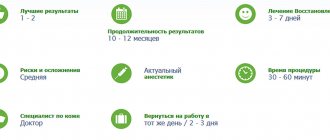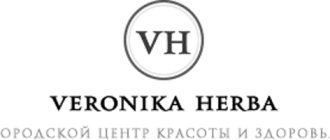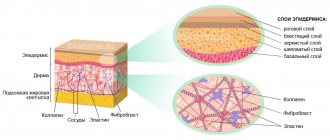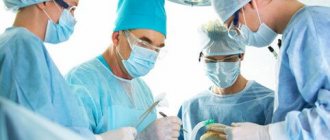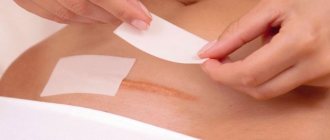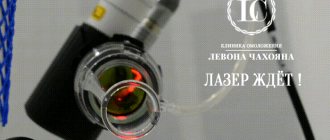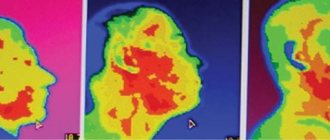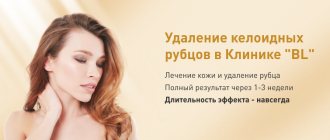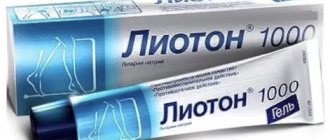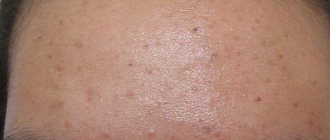Laser rejuvenation can be considered one of the most effective and universal methods of combating age-related skin changes. Targets (target chromophores) for laser radiation are almost all skin chromophores - water, hemoglobin, melanin, collagen. The selectivity of laser exposure allows you to select an individual scheme for correcting involutional skin disorders for any type of aging. Skin rejuvenation using a laser resurfacing device is achieved either by layer-by-layer removal - the ablation method, or by heating the skin without violating its integrity - the non-ablative method. In this case, the beam of the laser resurfacing device can be distributed on the skin in two ways: • by completely covering its surface (with classical ablation, non-ablative photothermolysis); • by crushing (fractionation) the laser beam into several tens or hundreds of microbeams (with fractional non-ablative photothermolysis, fractional ablation).
Do you urgently need to buy an UltraPulse device? Call us 8 (495) 988-21-80!
The mechanisms of skin rejuvenation when using ablative and non-ablative laser methods are different. In this article we will focus on the features of the use of ablative lasers.
Sign up for the procedure
Price: 5000 rub (upper or lower eyelids)
Do you want to get rid of dull complexion and various skin imperfections in just one procedure? Thanks to CO2 Light fractional laser peeling, your skin will regain its natural radiance and smoothness! The beam of the AcuPulse device not only removes damaged cells on the surface of the skin, erasing all imperfections, but also forms healing microzones in the epidermis, renewing it from the inside. Developed by the renowned company Lumenis, the AcuPulse laser is one of the most advanced CO2 lasers in the world. Its unique ultra-short pulse allows you to achieve impressive results with no side effects.
The laser peeling procedure has become a real must-have for girls over 25 who care about the beauty, health and youth of their skin.
Why is it worth undergoing a laser peeling procedure with us? The Premium Aesthetics Academy of Cosmetology is the only clinic in Moscow opened by the official distributor of the AcuPulse laser in Russia. We can guarantee impeccable quality of the procedure and affordable cost.
Advantages and disadvantages
| Advantages | Flaws |
|
|
How does the procedure work?
CO2 Light peeling takes about 20-30 minutes and consists of the following steps:
- 40 minutes before the start of the session, the cosmetologist thoroughly cleanses the face and applies an anesthetic cream.
- After the anesthetic has taken effect, the patient puts on protective glasses and begins the procedure.
- As the handpiece moves across the skin, a thin laser beam evaporates tiny microzones in the upper layer of the skin (epidermis). Then, with the help of the remaining intact tissues, the process of regeneration and renewal of the skin occurs. Also, the heat of the laser beam activates the restoration of collagen in the upper layers of the skin, which promotes slight tightening of the skin and at the same time prevents aging.
- The laser peeling procedure is completed by applying a special ointment to minimize redness and swelling.
Technique for ablative skin resurfacing using a CO2 laser resurfacing device
From a practical point of view, lasers operating in superpulse (pulse width from 1 ms to 20 ms) and ultrapulse (pulse width up to 1–3 ms) modes are better suited for laser resurfacing. According to the principle of selective photothermolysis (RR Anderson, JAParrish, 1983), the target (chromophore) heats up less if the duration of the laser pulse is less than the thermal relaxation time (TRT) of the chromophore. (TTR is the period of time during which the target temperature, which increased at the moment of the pulse, will decrease to 50% of the initial level) A pulse duration exceeding the TTR will cause unwanted overheating of the tissue. For water-containing skin components, the TTR is about 1 ms. Accordingly, lasers with pulse durations of less than 1 ms are capable of rapidly vaporizing tissue, leaving a very narrow zone of residual thermal necrosis (up to 100 μm).
All modern carbon dioxide lasers use computerized scanners - CPG (Computer Pattern Generator) - to distribute energy evenly onto the skin. The most effective carbon dioxide laser for skin resurfacing is the ultra-pulse laser UltraPulse Encore (Lumenis, USA), which has the best technical characteristics: maximum peak power when exposed to up to 240 W, entering the tissue in a short period of time - up to 1 ms.
Indications for laser skin resurfacing with a CO2 laser: • photoaging of types III–IV according to the Glogau scale (RG Glogau, 1996); • age-related aging of the skin, manifested by wrinkles of varying clinical severity and loss of elasticity; • eyelid skin defects (laser pseudoblepharoplasty is indicated); • actinic and seborrheic keratosis; • gravitational ptosis of the face (non-surgical facial skin tightening is indicated).
Laser skin resurfacing with a CO2 laser is most recommended for patients aged 40–65 years with fair skin and fairly pronounced static wrinkles. For younger patients with initial signs of photoaging, laser ablation with a CO2 laser is not recommended; it is better to use laser technologies based on fractional exposure, which are sufficiently effective for correction in these cases. Patients should be selected with realistic expectations and who do not insist on complete removal of wrinkles. It is not recommended to use carbon dioxide laser resurfacing in the neck, décolleté and dorsum of the hands due to the high risk of scarring.
Patient preparation
It is necessary to pay close attention to the following points: • A history of recurrent herpetic infection (Herpes labialis and facialis) requires treatment with antiviral drugs (Acyclovir, Famvir, Valtrex) 1–2 days before the procedure and continued therapy until complete re-epithelialization (within 7–8 days). • If there is a history of hypertrophic and keloid scars, laser resurfacing deeper than the papillary dermis should be avoided. • If there is significant drooping or severe laxity of the skin of the lower eyelid, it is not recommended to use aggressive laser resurfacing, so as not to provoke the formation of ectropion (inversion of the lower eyelid). • It is imperative to evaluate the allergy history. Local anesthesia is contraindicated in patients with a true lidocaine allergy. • Laser resurfacing should not be performed in psychologically unstable patients, as they will not be able to adequately withstand the full course of rehabilitation measures and thereby provoke the development of adverse complications.
Contraindications for laser skin resurfacing with a CO2 device
Absolute contraindications: • pregnancy, lactation; • active bacterial, viral, fungal infection in the area of laser exposure; • presence of human immunodeficiency virus (HIV), hepatitis C; • systemic connective tissue lesions with damage to the skin and subcutaneous tissue (systemic lupus erythematosus, granuloma annulare, discoid lupus erythematosus, scleroderma, dermatomyositis, etc.); • inflated expectations of the patient, lack of compliance, mutual understanding between the patient and the doctor.
Relative contraindications:
• poor general health of the patient; • taking isotretinoin medications within the previous 6 months; • IV-VI skin phototype according to Fitzpatrick; • patient's rejection of the possibility of postoperative erythema or hyperpigmentation; • significant sagging skin of the eyelids; • excessively thick or thin skin; • tendency to develop keloid and hypertrophic scars.
Result
The effect of the procedure delights patients who tried CO2 Light for the first time. According to their reviews, the skin on the face after laser peeling looks smooth, fresh and perfectly smooth to the touch. In some cases, one procedure will be enough; if indicated, the cosmetologist will prescribe 2-3 sessions at intervals of approximately once a month. The resulting effect will last for a long time, during which the face will look fresh and radiant.
- Healthy and even complexion and texture;
- Smooth and elastic skin;
- Prevention of age-related changes;
- Alignment of enlarged pores;
- Normalization of sebum production and water balance in the dermis;
- Smoothing out small wrinkles;
- Light skin lifting.
PROTOCOL FOR LASER GRINDING OF FACIAL SKIN USING CO2 LASER
1. Before the procedure 4-6 weeks before laser resurfacing, local therapy is prescribed: • cream containing retinoic acid in a concentration of 0.05–0.1% (0.5–1 g of RetinA or Tretinoin cream, Obagi) , at night; • cream containing 2–4% hydroquinone (0.5–1 g Clear, Obagi) 2 times a day, morning and evening (patients with skin phototype I may not be prescribed hydroquinone); • cream containing 2–4% AHA (0.5–1 g Exfoderm) in the morning; • sunscreen with SPF 30 or higher. Immediately before the procedure, the skin is cleansed (washed) using antibacterial soap. Then the skin is treated with a solution of chlorhexidine bigluconate 0.05%. The peripheral areas of the face should be covered with a damp cloth. To prevent damage to tooth enamel, gauze or special mouth guards soaked in saline solution should be placed under the lips.
Anesthesia• The use of local infiltration anesthesia is not recommended as this may alter the optimal interaction of the laser radiation with the tissue. • The use of regional nerve block in combination with intravenous sedation is considered the most optimal method of anesthesia. When performing laser resurfacing of the entire face, blockade of the following nerves is required: supraorbitalis, supratrochlearis, infraorbitalis, auriculotemporalis, zygomaticofacialis, mentalis and plexus cervicalis. • Intravenous sedation is carried out using propofol (Diprivan) and midazolam (Dormikum). The analgesic component is provided by fentanyl. This type of anesthesia requires the use of special equipment: an anesthesia-respiratory apparatus, an apparatus for obtaining oxygen, a cardiac monitor, a pulse oximeter and is performed by an anesthesiologist. A laryngeal mask airway should be used to ensure a clear airway during intravenous sedation. In some cases (in combination with surgery), endotracheal anesthesia is used.
2. Carbon dioxide laser resurfacing procedure Treatment parameters are set in accordance with the technical features of the laser device and are selected individually for each patient depending on the clinical indications, skin type and condition.
Treatment protocol • Energy density - 3.5–5.0 J/cm2. • The first pass is produced in dense single pulses with minimal edge overlap. • The treated skin is moistened with wipes soaked in saline solution, then the remaining necrotic skin tissue is removed. • The second pass follows the same pattern, but the pulses must be applied at a 90° angle to the first pass. During the second pass, the tightening of the skin is more noticeable. The depth of ablation decreases. The second and subsequent passes can be used to treat specific areas of the skin, for example in areas with severe photodamage or scar deformities.
Treatment scheme: forehead → temporal area → cheeks and chin → eyelids.
To prevent the appearance of a demarcation line, it is necessary to smooth out the boundary between the edges of the treated and untreated skin, making only one pass in this area using low radiation parameters. It is better not to remove the remains of necrotic tissue. The number of passes is determined by the degree of photodamage to the skin: one pass for mild, two for moderate, three for severe photodamage. The end of the procedure is the appearance of a yellow or brown discoloration of the skin, which is a sign of thermal damage, which persists after removing the detritus with a saline soaked cloth. This recommendation should always be followed, even if optimal clinical results are not achieved. As the depth of ablation increases, there is a risk of developing irreversible complications - scars and hypopigmentation. The ablation depth should be limited to the papillary dermis for mild to moderate photodamage or to the upper/middle reticular dermis for severe structural changes and elastosis.
3. Postoperative care There are two ways to manage the wound surface: 1. Open - use of occlusive ointment based on petroleum jelly until complete re-epithelialization occurs. You can also use Dexpanthenol in combination with chlorhexidine, Bepanten Plus cream or methyluracil ointment. Antibacterial ointments should not be used due to the risk of contact dermatitis. 2. Closed - use of semi-occlusive dressings: polyurethane film (Silon II), hydrocolloid (Flexzan) or hydrogel dressing (Vigilon). The advantage of this method of managing the wound surface is faster re-epithelialization of the skin. Disadvantages include an increase in the cost of rehabilitation measures, the risk of infection, and the need for frequent visits to the clinic.
Follow-up care of the patient • The patient must be provided with the opportunity to have constant contact with the attending physician (primarily by telephone). • During the first week, exudation of varying severity and crust formation occurs. Skin care during this period depends on the method of wound management. • Approximately 2–3 weeks after complete epithelialization, light moisturizing creams can be used. • 3-4 weeks after the procedure, it is recommended to re-prescribe hydroquinone and retinoic acid cream. Alpha hydroxy acids should not be used in the early stage of healing until the epidermal layer is completely restored and skin sensitivity is restored. • Patient assessment schedule: 2-3 days, 1 week, 3-4 weeks, 3 months, 6 months and 1 year after the procedure.
What devices are used
AcuPulse
FDA-approved device from the Israeli company Lumenis for superficial and deep ablation, continuous grinding, excision, removal and layer-by-layer tissue vaporization.
The laser radiation wavelength is 10,600 nm, average power is 40 W. Impact depth - up to 1 mm.
The device is equipped with several modes.
- Deep – for working out the deep layers of the dermis. Fights pronounced wrinkles, scars, and tightens the skin.
- Superficial – for superficial effects. Removes age spots and minor wrinkles;
- Combo – a combination of deep and superficial ablation.
- StretchTouch – for the correction of stretch marks.
- FeatherTouch – continuous peeling.
- SilkTouch – continuous superficial peeling.
- FineTouch – point impact.
- Paint – continuous peeling of a small area.
- ToeTouch – for the treatment of onychomycosis.
- Bleph is a mode designed for surgical excision of tissue, also used for blepharoplasty.
Pixel Plus
The device is capable of generating continuous, intermittent and single pulses. Wavelength - 10,600 nm, average power - 50 W. Equipped with an air cooling function for the skin.
The functionality of the device is very wide:
- In dermatology and cosmetology, the device is used for superficial and deep rejuvenation, removal of pigmentation, narrowing of pores, lifting, polishing of various types of scars;
- In surgery: removal of benign skin tumors, cauterization of erosions on the mucous membranes;
- In gynecology: for the treatment of vaginal atrophy syndrome, normalization of the secretory activity of mucosal glands, correction of age-related changes in the external genitalia, stress urinary incontinence.
Rehabilitation period
After laser treatment, the dermis turns red and swells - these symptoms disappear within 10 days. Weeping and crusting also form.
Important! You can't remove the crust. It disappears after 2-3 days. Do not listen to advice about wiping with peroxide or washing under running water. The skin must recover on its own.
Until complete tissue restoration is strictly prohibited:
- be in direct sunlight, visit a solarium;
- use aggressive cleansers containing alcohol, as well as carry out acid peels both at home and in the salon;
- rub or massage your face;
- apply makeup, including using foundation or powder;
- visit a sauna, bathhouse, public swimming pool, and do not take hot baths for a long time.
Compliance with all recommendations and restrictions during the recovery period is the key to successful and safe manipulation.
Skin care tips:
- if pain occurs, use a cream or ointment with an anesthetic (a suitable remedy is prescribed by a doctor);
- After washing your face, it is advisable to blot your face with a disposable napkin rather than wipe it with a towel;
- When going outside, be sure to apply sunscreen;
- To eliminate dryness, tightness or discomfort, use a moisturizer.
